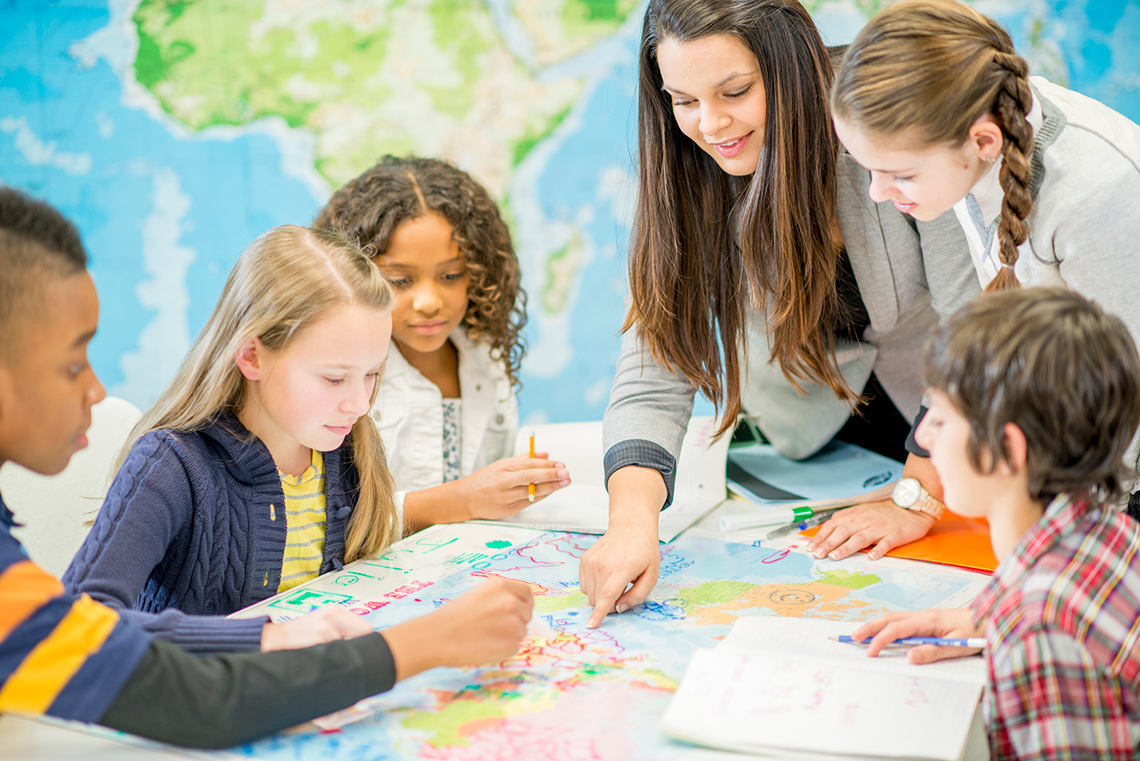Minds On
What’s your path?

Brainstorm
Let’s think!
Think about the different routes or paths you can take throughout the day to get from one place to another.
For example, think about the route or path you take to get to a park, school, or another building.
Task: Which way?
Follow the steps for this learning activity.
- Choose a path to take to get from one place to another.
- Pick a starting point and an end point.
- Describe the path or route you can take to get from one place to another.
- Answer the following questions:
- Where do you start?
- What do you do first, second, third?
- Where do you end?
Record your ideas in your notebook or another method of your choice.
Action
Maps and grids
Select the correct answer, then press the ‘Check Answer’ button to see how you did.
Press the ‘Show Results’ button to access a description about maps.
Select the correct answer, then press the ‘Check Answer’ button to see how you did.
Press ‘Show Results’ to reveal a description about grids.
What is a grid?
- A grid helps to show where one object is compared to another.
- You can use a grid to help figure out distances and pathways to follow.
What does a grid have?
- A grid uses lines which go up and down, and left to right.
- There are numbers on the left side of the grid, and they usually start at 1.
- There are letters labelled across the bottom of the grid, which go from left to right and usually start with the letter A.
- Sometimes the location on a grid is described by where the grid lines meet.
- Sometimes a location on a grid is described by the space between the grid lines.
Exploring a map grid
The following is a map grid with various locations in a community:
Student Tips
Using the grid
When we describe where a point is on a grid, we first share the letter on the bottom, then the number on the left side.
After exploring the Community Map Grid, provide the location of the following places using numbers and letters:
- School
- Bakery
Complete the Exploring the Community table in your notebook or press the ‘Activity’ button to use the following fillable and printable document. You can also use a method of your choice.
| Object | Letter | Number | Location |
|---|---|---|---|
| Example: Community Centre | B | 2 | B2 |
| School | |||
| Bakery |
Press ‘Activity’ to access the Exploring the Community.
Press ‘Show Results’ to access the selected places.
| Object | Location |
|---|---|
| School | G4 |
| Bakery | I6 |
Traveling from location to location
Directions
A map grid can help us travel from one location to another, or from one object to another.
When providing directions, we use:
- a combination of words, numbers, and units to describe the movement from one location to another (i.e., 6 steps to the right)
- words like above, below, to the left, to the right, behind , and in front of to describe the location of one object in relation to another (direction)
- numbers to describe the distance from one object to another
Student Tips
Did you know?
When describing how to travel from one place to another, the order of the steps is important.
For example, if we were providing directions for someone to travel from the Community Centre (B2) to the Medical Clinic(B6), the directions may include:
- Start at B2, which is the Community Centre.
- Move 4 steps on the map grid to get to B6, the Medical Clinic.
Explore the following 2 sets of directions and choose the set of directions that can be followed to go from the bakery at I6 to the park at I2, using the provided community map grid.
Set 1:
- Start at I6, the bakery.
- Move 5 steps down to get to I2, the park.
Set 2:
- Start at I6, the bakery.
- Move 4 steps down to get to I2, the park.
Select the correct answer, then press ‘Check Answer’ to check how you did.
Time to travel!
Using the community map grid, create directions for someone to follow to travel from the school at G4, to another building of your choice.
- Use specific language such as: up, down, left, and right.
- Use words, numbers, and units to describe how to move from one location to another (i.e. 4 units to the right, 5 units up, or 3 units down).
Record your ideas in your notebook or another method of your choice.
Consolidation
Creating directions
Using the community grid map, let’s create directions to travel from the school to two other buildings of your choice.
- You will start at the school, and create directions to get to one building.
- Then, starting from that building, you will travel to another building of your choice.
For example, start at the school and provide directions to travel to the library. Then, from the library, provide directions to travel to the grocery store.
Student Tips
Reminders
- Use specific language such as: up, down, left, and right.
- Use words, numbers, and units to describe how to move from one location to another (i.e. 4 units to the right, 5 units up, or 3 units down).
- Record your starting point and where you end.
Record your ideas in your notebook or another method of your choice.
Reflection
How do you feel about what you have learned in this activity? Which of the next four sentences best matches how you are feeling about your learning? Press the button that is beside this sentence.
I feel...
Now, record your ideas about your feelings using a voice recorder, speech-to-text, or writing tool.